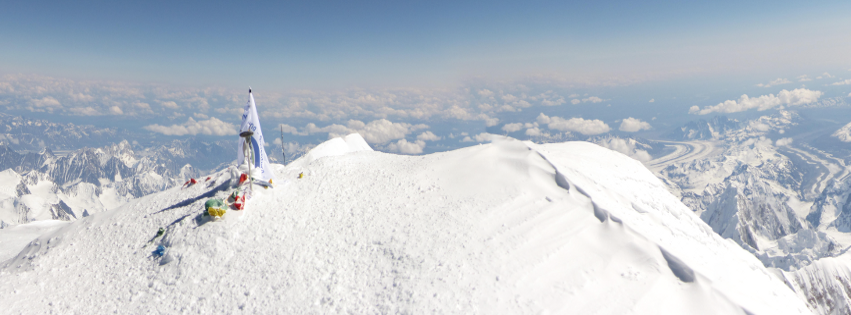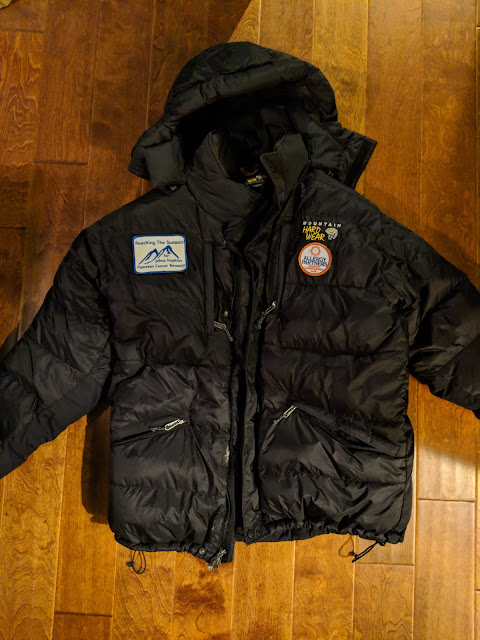My
last post focused on my feet. Today, or rather two days ago I intended to shift my attention just north to my legs. That intention was met with reality. Several things at work and some tough days of training kept me from taking pictures of my gear. I promise to return to the gear posts on Thursday (6 days from now). Yeah, I know I am out of sync with these posts. Just trying to fit in as much as possible in the little time I have left at home.
What am I up to these days?
1. Working (Having Fun). I have four graduate students who are steadily progressing through their doctoral work. Along with guiding them, I have several projects that occupy my days - perhaps too many projects that occupy too much time but I love the daily challenge. Leaving for Nepal (and Tibet) in early April requires me to get caught up on all of these work projects well before I depart. These projects also provide me with endless ideas about what to post on my
Psychology Today Blog. Work is fun. Actually, I often say I never worked a day in my life. With the exception of those days filled with meetings, I can honestly say I rarely work; I have fun.
 |
| Hard at work....in my own sloppy way. |
2. Training. I train most days for 3 hours except for rest days when I only train for about 1.5 hours. The indoor training routine is starting to drag me down a bit. I know I need to press through but I just cannot get enthused about training. Perhaps this is a good sign that I am ready? I don't know, but mentally I am ready to go. Based upon my schedule, I have 17 more "hard" days of training before I begin my recovery period. Those days will be difficult but I enjoy the challenge; I just wish I could get more pumped up for the sessions now. Each day begins with some light warm-up exercises, core work, lifting, running, and then more cardio with my pack. I wish I could just put on my pack and go climb. Soon.....oh so soon.
 |
| My home gym - ready to be used for 3 hours |
3. Sleeping (barely). Hypoxic sleep training starts off really fun/exciting and then progresses toward work - yes, work and I mean work. Today, I woke up at 8.7% oxygen in my head tent. What does that percentage mean? I had about 42% of the oxygen that most of you had this morning. That oxygen level is roughly equivalent to the summit of Aconcagua (23,000 feet or 7000 m). Even typing that gives me chills. I had tons of fun climbing Aconcagua with my friend Brendan. He and I will be your tour guides this spring on Everest so stay tuned for an introduction. For now, I struggle to sleep through the night. I wake up almost every night at 2am after going to sleep at roughly 9pm. From 2am until about 4am, I think about things to do. After 4am, I may drift back to sleep but more often I just get up and grab a cup of tea. For those of you more interested in my acclimatization, my spO2 ranges from about 65% to 78% on most mornings. All in all, I feel great in the morning (perhaps less so this morning) and feel great while training. Getting started with my training routine early is likely affected by my hypoxic sleeping (if you want to call it sleeping).
 |
| The night-time arrangements where I may sleep (or not) |
4. Preparing. The last few weeks before departing on any expedition tend to be the most hectic. Everyone wants things from me and I only have about 15 hours each day to devote to these life activities. Part of the preparation is packing, sorting through gear, checking each piece for integrity, and
organizing lists upon lists to reduce the cognitive burden while I am climbing. These preparations take time. I am also ordering last-second consumables (e.g., sunscreen, body wipes, and such). Taking stock of what I have and what I need is a full-time job that needs to fit into what remains of my day after I sleep, work, and train. To add a little intrigue into the mix, I also have to prepare to collect data while on Everest. I didn't mention this before but will explain the rationale in a future post. So climbing and working preparations occupy my "spare" time when I am not working, training, or sleeping.
You might ask yourself, when do I eat? I eat on the run. I eat when I can. I eat when I need to eat. More on that later - I promise. This morning, I woke up at 176 lbs (80 kg) down from 198 lbs (90 kg). I am eating...again, I promise. Between training, working, and sleeping, I can only eat so many calories to offset the weight loss. Heck, I had a few pounds to spare anyway. My weight is no concern right now. Finally, I am able to run without feeling the pounding through my knees.
My next post - probably on Thursday (March 8th, 2018 - 31 days remaining) - focuses on my leg gear. After that post, I should be in the clear to post more regularly on both gear and last-second preparations/announcements.
Thanks for following.










 5. Communications still need to be sorted out. I plan to use a Garmin InReach for communications while we are climbing. The InReach is quite a nifty device. I can send texts and updates along with links to a map where you can locate us. The only problem with technology is that you need to set it all up at home before you depart or else it simply will not work. I think there must be some rendition of Murphy's Law that governs the operation of technology but the only way to prevent mishaps is to get things sorted out. Over the next few weeks, I plan to post several "tests" that you can either ignore or become familiar with the system while I familiarize myself with it. Every day (weather and time permitting), I plan to send a message indicating where we are and how we are doing. Usually, these will be in the form of a map link and a simple "Doing fine, will send a more elaborate update when possible" message. Expect these tests to start in the next few days.
5. Communications still need to be sorted out. I plan to use a Garmin InReach for communications while we are climbing. The InReach is quite a nifty device. I can send texts and updates along with links to a map where you can locate us. The only problem with technology is that you need to set it all up at home before you depart or else it simply will not work. I think there must be some rendition of Murphy's Law that governs the operation of technology but the only way to prevent mishaps is to get things sorted out. Over the next few weeks, I plan to post several "tests" that you can either ignore or become familiar with the system while I familiarize myself with it. Every day (weather and time permitting), I plan to send a message indicating where we are and how we are doing. Usually, these will be in the form of a map link and a simple "Doing fine, will send a more elaborate update when possible" message. Expect these tests to start in the next few days. 



